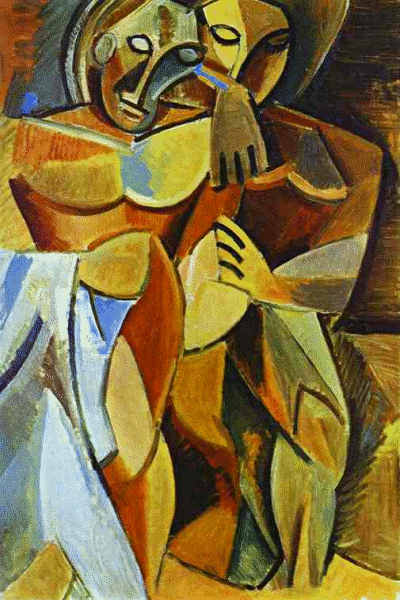†††††††††††††† A formal
Analysis on African Art of the 20th Century and
†††††††††††††††††††††††††††† Pablo Picasso -
Friendship
††††††††††††††† †††††††††††††††† ††††
††††††††††††††††††††††††††††††††††††††††††††††††††††††††††††††††††††††††††††††† By, Whitney Suber
†Whitney Suber††††††††††††††††††††††††††††††††††††††††††††††††††††††††††††††††††††††††††††††††††††††††††††††††††††††††††††††††††††††† Fall 2010
Introduction
to Art 200
Professor
Shahani
11-07-2010
†† †††††††††††A formal Analysis on African Art of
the 20th Century and
†††††††††††††††††††††††††††† Pablo Picasso Ė
Friendship
†††††††††††††††††††††††
Pablo Picasso was a
famed Spanish painter and sculptor of the 20th century. Throughout
his career he experimented with many different theories, ideas and techniques.
When Picasso went to a Paris museum he got a revelation from the influence of
all the African Art. Between 1907 and 1909 Pablo Picasso was influenced by
African Art. Picasso used primitive art to illustrate his painting known as
friendship.
When speaking of the
Picasso art period from 1907 to 1909 it is known as his African period or black
period. In 1908 Picasso changed from his classicist mannerism and used his primitive
power to illustrate his painting Friendship. Picasso is quoted saying ďDo you think it interests me
that this painting represents two figures? These two figures existed, they
exist no more. The sight of them gave me an initial emotion, little by little
their real presence grew indistinct they became a fiction for me, then they
disappeared, or rather, were turned into problems of all kinds. For me they are
no longer two figures but shapes and colours, donít misunderstand me, shapes
and colours, though that sum up the idea of the two figures and preserve the
vibration of their existence."† What I think Picasso was
referring to was, during this time in the early 20th century Africa
was suffering from colonialism and imperialism. Many African Artifacts were
being taken from African and be exported to Europe.† When Picasso says it the two figures do not
exist anymore he is possible saying how African donít have the simple liberties
of friendship, which why the sight gave initial emotions. Or he could be
talking about his overall style of art. He was heavily influenced by African
Art. He respected the ritual and magical meaning behind the African mask and
incorporated it into his own art, creating amazing message to the mainstream.
Picasso continued to develop a style that derived from African art. He would
have and African mask incorporate form, shape and techniques into his painting. Contemporary artists show their work alongside African art are
inspired by the power of African ritual objects, the unique patterning of
language and visual form, and the nature of materials. The abstract manner and
expressive representation with the African Mask Picasso made his own. The colors
used are very common amongst African Mask. †The eyes of the painting Friendship is very distinct. The oval like shaping and blank stare
gives you a sense of emptiness. Picasso used fragmenting and faceting to illustrate the human figure, which eventually gave birth to cubism.
Picasso's
friend Alice Toklas best summed up Picasso's disposition when she first saw one
of his painting known as, the Demoiselles. She described the painting as
"painful and beautiful...and oppressive but imprisoned". That may
well describe how Picasso felt during his Black Period, during which he was
caught between the commercial expectations of his dealers and his own artistic
ambitions. According to some biographers the young
Picasso saw himself as the new Messiah of art. In no small part,
Picasso's black period was a reaction against the mainstream art trade.
††††††††††††††††††††††††††††††††††††††††††††††† †††††††††† Work cited
∑
Ebscohost
:† Picasso, Africa, and the Schemata of Difference. Gikandi, Simon